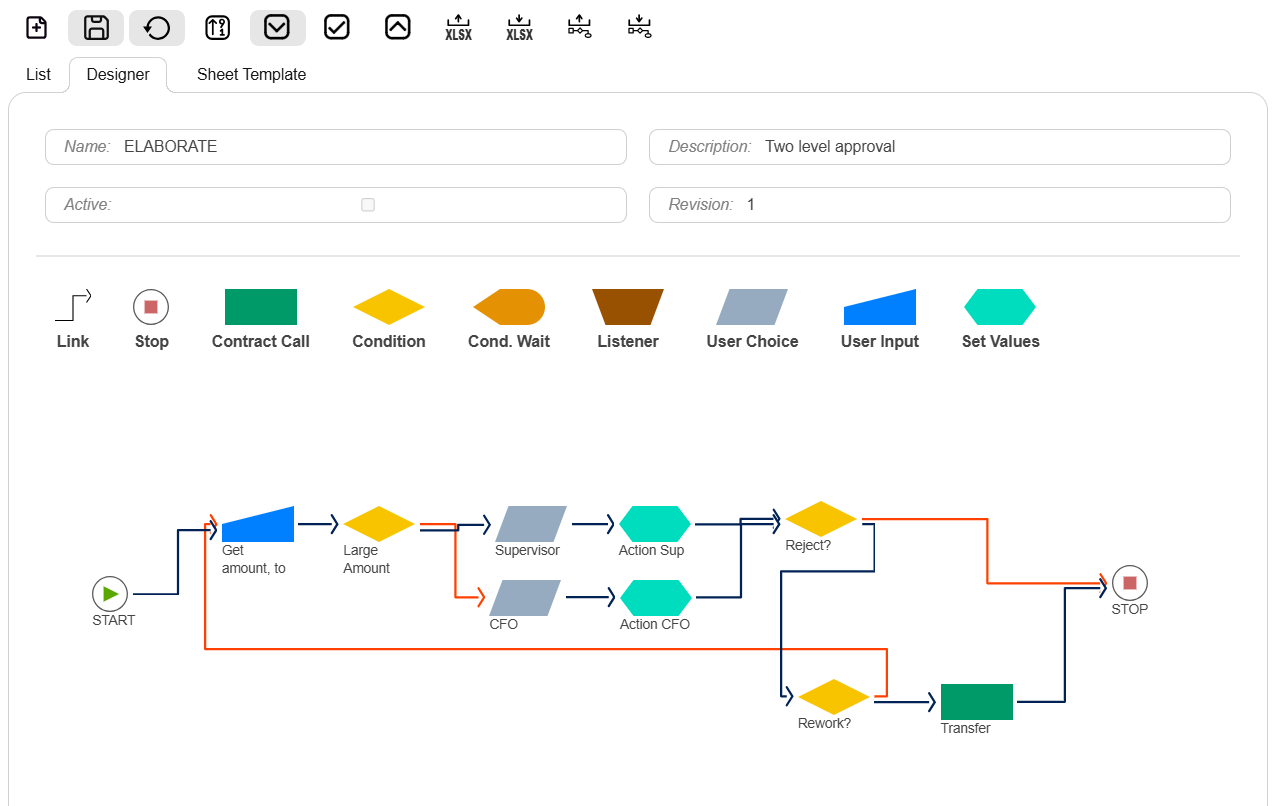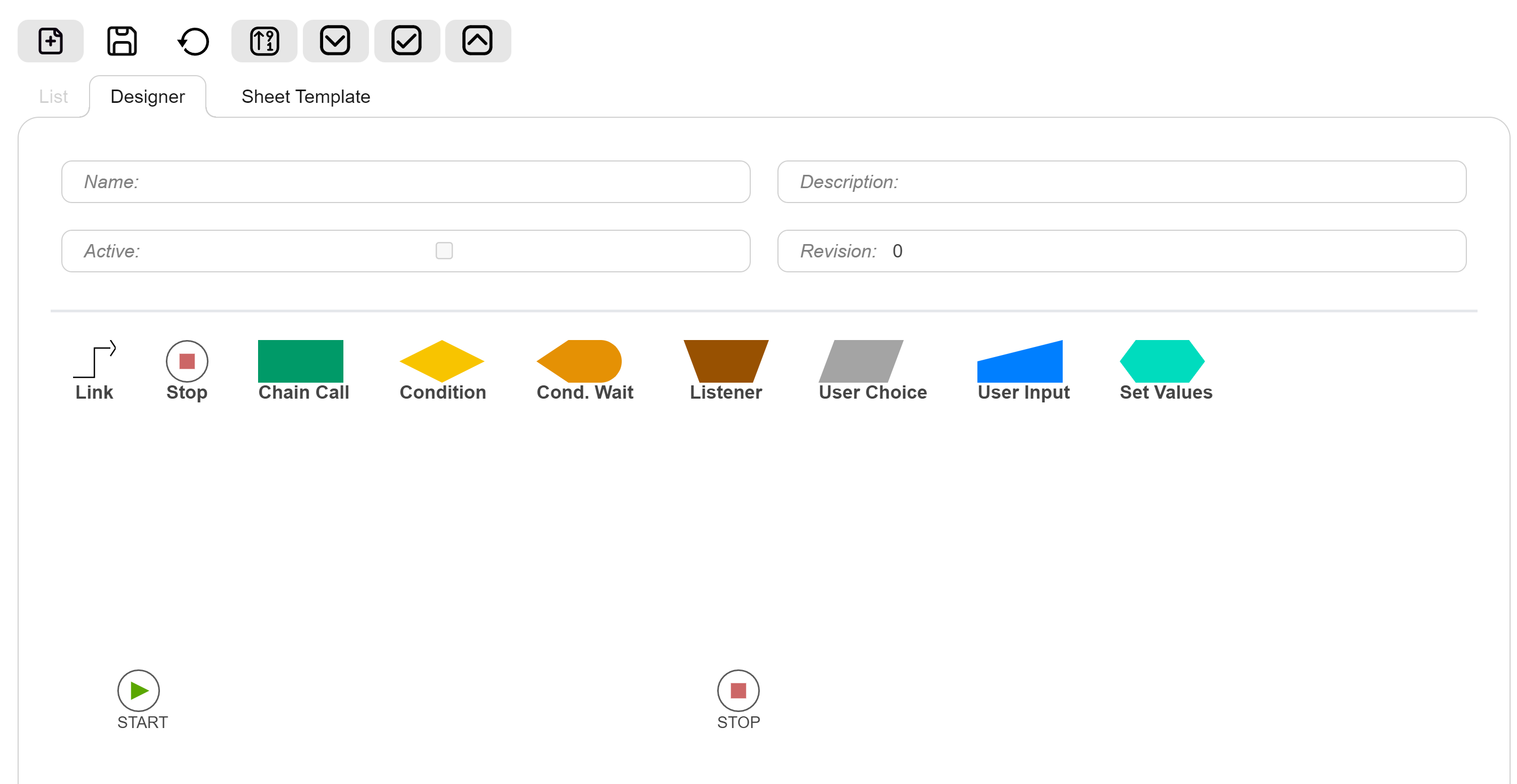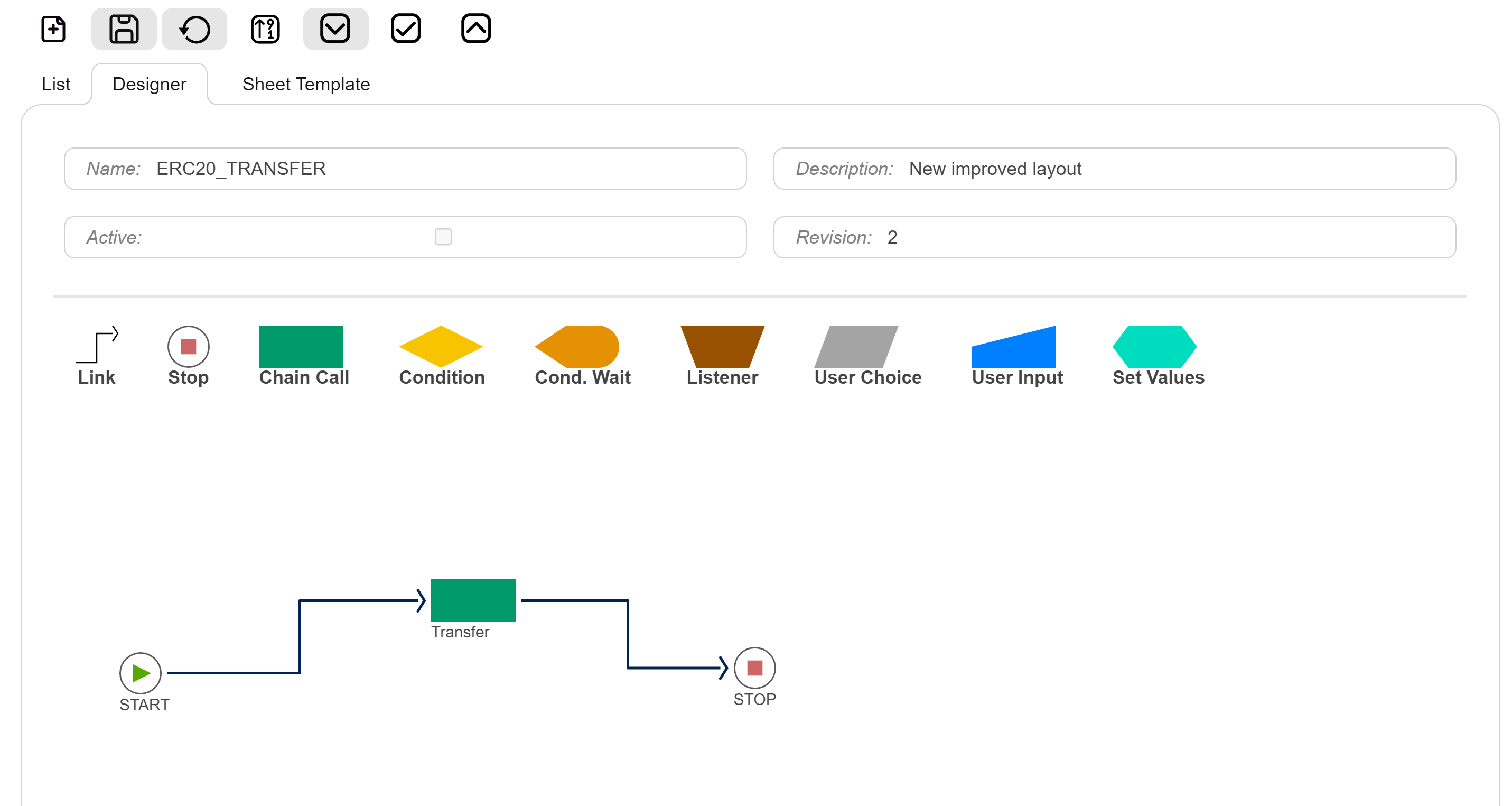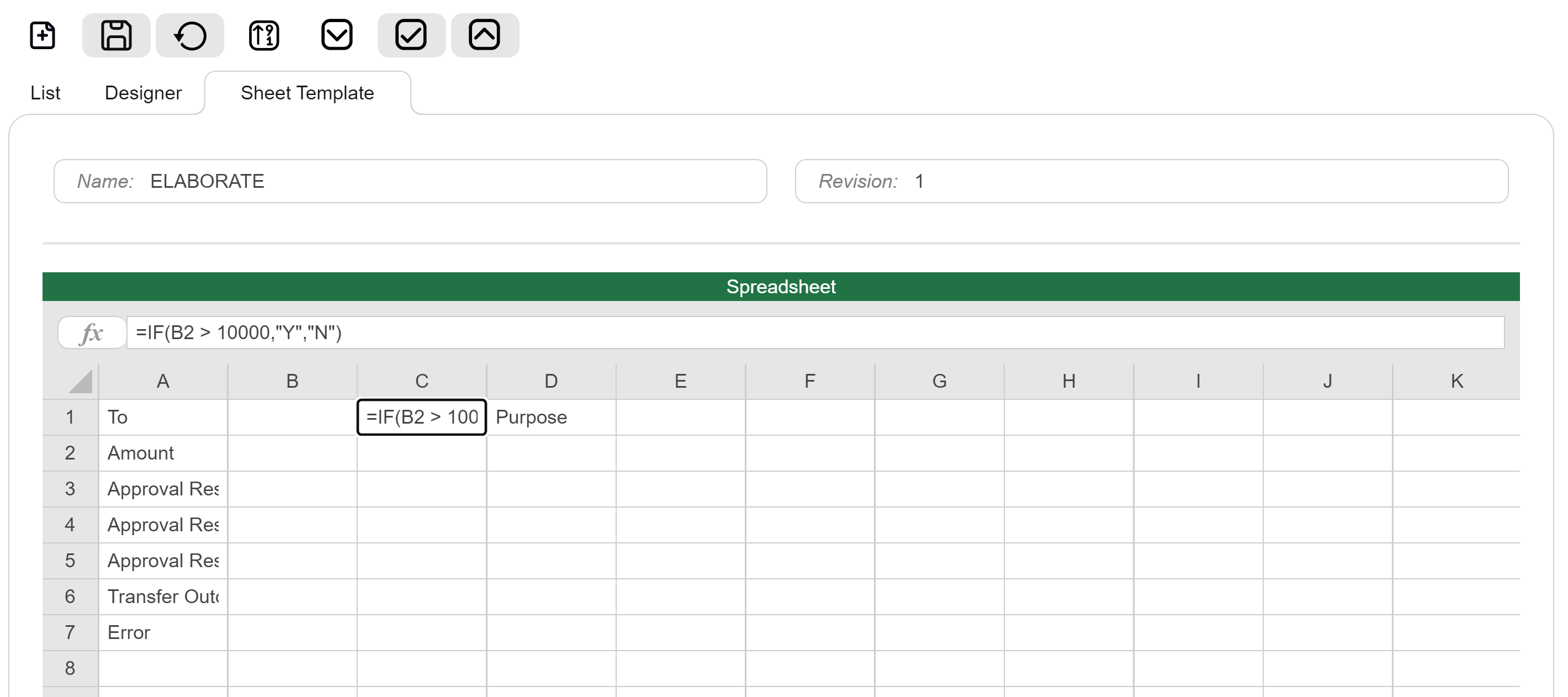Workflow Designer
The workflow designer is the core of the application where business processes and the related data rules are defined. This application consists of a graphical process designer with a multitude of different node types to merge or branch the process logic. This process flow logic is backed by a spreadsheet where the information used and created by the process flow is stored. This spreadsheet also supports the use of formulae to perform numeric or logical calculations to build additional business logic and validation rules.

Create a New Workflow Process
Navigate to the Workflow Designer application and click on the
icon. Fill in the details and click on the
icon. You will only be able to start designing the new process flow after it is saved for the first
time.

Edit an Existing Workflow Process
Navigate to the Workflow Designer application and enter the details of the workflow process into the search field, then press the enter key on your keyboard to search for the process. Click on the icon to start editing the workflow process.

Once you have edited the workflow designer record, you can click on the icon to save your changes.
State and Revisions
A workflow process can be active or inactive, and can only be edited while it is in an inactive status. If any active workflow process instances exist that are using this workflow definition, then this workflow process cannot be deactivated. In this case, all the active processes need to be stopped, or the workflow process needs to be revised.
- Use the
icon to activate a workflow definition. An active workflow definition can be used to start a new workflow process instance using the Sheet Processing application.
- Use the
icon to deactivate a workflow definition, allowing it to be edited.
- Use the
icon to validate a workflow definition to check if the nodes are sufficiently linked.
Note: A validated workflow process does not imply it is logically correct according to your business process, or that all the nodes in the process are correctly configured.It only checks that the nodes are linked correctly. - Use the
icon to revise a workflow definition. A revised workflow definition is a new copy of the original workflow definition with an incremented revision number. By default, it will be in an inactive state and can be edited.
Node Types
The Workflow Designer supports a number of different node types to facilitate different steps of the larger business process.
- Start Node: This node type cannot be added or removed, and there will always be only one in a workflow process. It can only have one outbound link and no inbound links.
- Stop Node: This node type can be added or removed, but there must always be at least one in a workflow process. It must have at least one inbound link and no outbound links.
- WF Link: This node type is used to link nodes together to define the process flow. To use it, click on the WF Link button to put the mouse pointer into link mode. The WF Link button will have a dashed border while the canvas is in link mode. Click on the node you want to link from, and then click on the node you want to link to. The link will be created between the two nodes.
- Condition Node: This node can branch a business process. It must have one true and one false outbound path. It must have at least one inbound link. Click here for more details...
- Conditional Wait Node: This node will pause a workflow process until a condition is met. It must have at least one inbound link. It must have only one outbound link. This node is typically used in conjunction with the Listener node. Click here for more details...
- User Choice Node: This node is an assignable node that is used to prompt the user to choose one of several options. It can be configured to require the user to supply a reason for the selected choice. The selected choice is written to a cell on the associated spreadsheet which can be used for further processing at a later stage of the workflow process. It must have at least one inbound link. It must have only one outbound link. Click here for more details...
- User Input Node: This node is an assignable node that is used to prompt the user for one or more input values. It can be configured to validate the values using a regular expression. If the regular expression is not matched, it will prevent further processing and display a message to the user explaining the validation error. The user-supplied value is configured to be written to a specific cell on the associated spreadsheet. It must have at least one inbound link. It must have only one outbound link. Click here for more details...
- Set Value Node: This node is used to set a cell to a specific value. It must have at least one inbound link. It must have only one outbound link. Click here for more details...
- Contract Call Node: This node is an assignable node that is used to call a function of a specific contract on the blockchain. It allows the function call to use values from the spreadsheet for the method call parameters, and it will write the outcome of the contract call to the spreadsheet. If the contract call must be signed, it will either prompt the user via the EIP-6963 injected Wallet Provider to sign the transaction, or it will sign the transaction with the built-in Petty Wallet, or it will initiate an M-of-N signing ceremony, whichever wallet type was configured to be used. It must have at least one inbound link. It must have only one outbound link. Click here for more details...
- Listener Node: This node can be configured to register for certain events on the blockchain network and write one or more event values into the spreadsheet for further processing. It cannot have any inbound or outbound links. This node is typically used in conjunction with the Conditional Wait node, but it is not required to be used as such. Click here for more details...
Sheet Template
On the Sheet Template tab a spreadsheet is defined where the data associated with the workflow process can be stored. These stored values can then be used by the workflow process at a later stage to provide the information required by some workflow nodes. The Sheet Template also supports spreadsheet formulas, which can be used to do numeric or logical calculations.
Below is an example of a process flow which uses a formula to set the C1 cell to value Y when the B2 cell value is larger than 10000. A Condition node can be configured to read cell C1 to branch the business process flow under certain circumstances.

